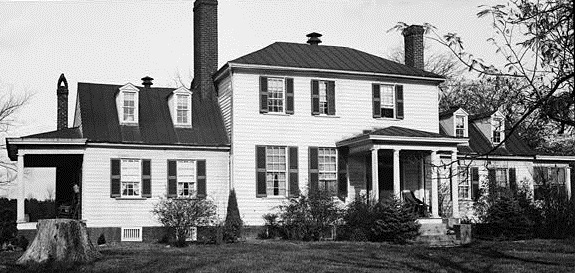
Burnt Quarter is a historic plantation house in Dinwiddie County. Built in stages starting in 1750, the house is a two story structure with a hipped roof and a central section flanked by 1 ½ story wings. It is believed that the property on which the house sits was patented to Robert Coleman in the late 17thcentury. Joseph Goodwyn acquired the property after he married the daughter of Robert Coleman, a descendant of the first owner. The property passed into the Gilliam family, who currently own it, after the Goodwyn’s daughter married John Gilliam (1810-1853). The plantation was named for a family tradition. During the Revolutionary War, British Colonel Banastre stopped at the estate long enough to burn the grain quarter and the outbuildings. The plantation was primarily used for tobacco, but it also supplied Confederate armies with necessary supplies. This included plantation tanned hides for soldier’s shoes and grain for the horses.
The plantation is significant because it became the scene of the decisive Battle of Five Forks. During the battle, the house served as a headquarters for Union General Merritt and as a military hospital. Part of the house was riddled with bullets and the rear chimney was destroyed. Union troops destroyed the interior by damaging the furniture and slashing the family portraits. After the war the Gilliam family proudly refused Federal aid to have the portraits restored. The battle became significant after General Warren captured 5,000 Confederate troops. This weakened General Lee’s line of defense around Petersburg. This forced the evacuation of Richmond.
The home is privately owned and not accessible to the public. It was listed on the National Register of Historic Places in 1969. There is an historical marker four miles south of the home.